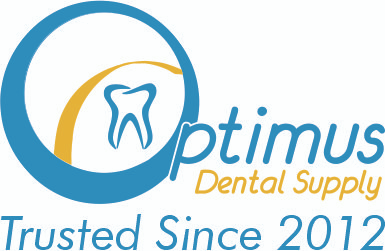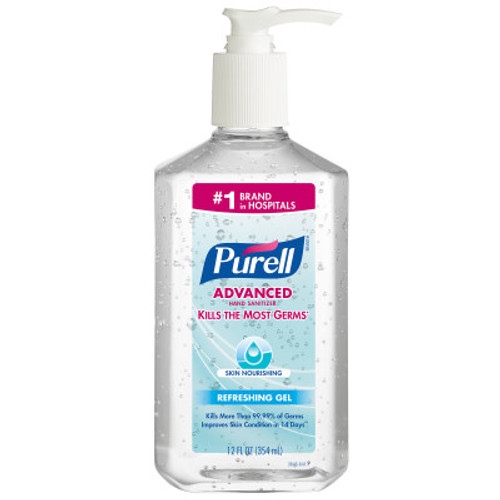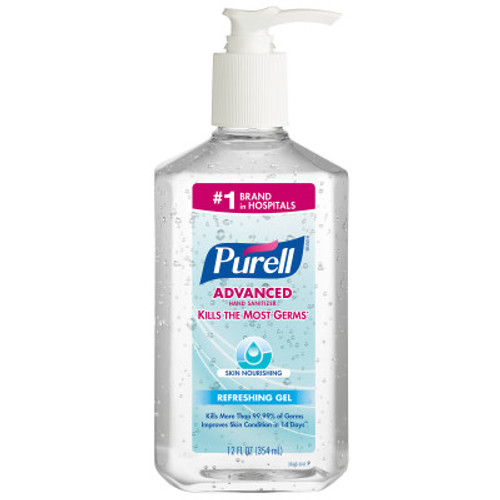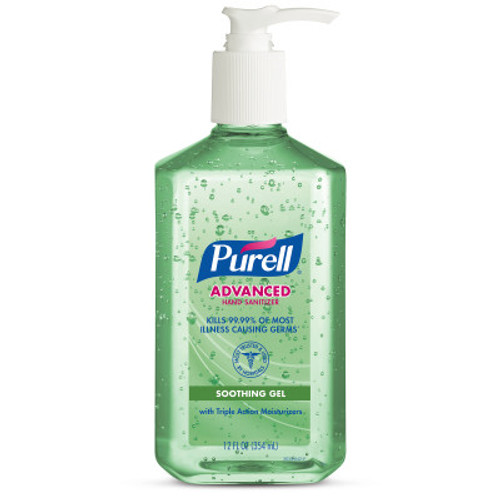Product Description
Refreshing gel.
- Kills more than 99.99% of most common germs that may cause illness
- Outperforms other hand sanitizers ounce-for-ounce¹
- Clinically-proven to maintain skin health²
- America’s #1 Instant Hand Sanitizer³
Inactive Ingredients: Water (Aqua), Isopropyl Alcohol, Caprylyl Glycol, Glycerin, Isopropyl Myristate, Tocopheryl Acetate, Acrylates/C10-30 Alkyl Acrylate Crosspolymer, Aminomethyl Propanol, Fragrance (Parfum)
Ingredients of ‘fragrance/parfum’ comply with the safety standards of the International Fragrance Association (IFRA) and can be found within the List of Consumer Goods Fragrance Ingredients
A close look at alcohol gel as an antimicrobial sanitizing agent.
Read the articleResults: The Healthcare Personnel Handwash data showed that the mean log reductions from baseline were greatest for the lotion soaps with alcohol gel sanitizer, less for the alcohol alone and the antimicrobial soap alone, and least for the bland soap alone. All of the product regimens showed a low potential for skin irritation.
Conclusion: In terms of both microorganism reduction and skin irritation, the most effective product regimens were the use of alcohol gel sanitizer in combination with either an antimicrobial or a bland soap.
Reference: AJIC: American Journal of Infection Control. 27(4):332-338, August 1999. Paulson, Daryl S. PhD a; Fendler, Eleanor J. PhD b; Dolan, Michael J. BS b; Williams, Ronald A. MS b
Effectiveness of a comprehensive hand hygiene program for reduction of infection rates in a long-term care facility
Results: Infection rates for LRTIs were reduced from 0.97 to 0.53 infections per 1,000 resident-days (P = .01) following the intervention, a statistically significant decline. Infection rates for SSTIs were reduced from 0.30 to 0.25 infections per 1,000 resident-days (P = .65). A 54% compliance rate was observed among HCP.
Conclusion: This study demonstrates that the use of alcohol-based hand rubs, as part of a comprehensive hand hygiene program for HCP and residents, can decrease infection rates in LTCFs.
Reference: AJIC: American Journal of Infection Control. January 2013. Volume 41, Issue 1, Pages 39-44. Steven J. Schweon, RN, MPH, MSN, CIC, HEM; Sarah L. Edmonds, MS, Jane Kirk, MSN, RN, CIC, Douglas Y. Rowland, PhD, Carmen Acosta, RN, BSN
The impact of alcohol hand sanitizer use on infection rates in an extended care facility.
Results: The primary infection types found were urinary tract with Foley catheter, respiratory tract, and wound infections. Comparison of the infection types and rates for the units where hand sanitizer was used with those for the control units where the hand sanitizer was not used showed a 30.4% decrease in infection rates for the 34-month period in the units where hand sanitizer was used.
Conclusion: This study indicates that use of an alcohol gel hand sanitizer can decrease infection rates and provide an additional tool for an effective infection control program.
Reference: AJIC: American Journal of Infection Control. 30(4):226-233, June 2002. Fendler, E. J. PhD a; Ali, Y. PhD a; Hammond, B. S. a; Lyons, M. K. BSN, RN b; Kelley, M. B. CRRN b; Vowell, N. A. RN b
Efficacy of Novel Alcohol-Based Hand Rub Products at Typical In-Use Volumes
Abstract: In vivo efficacies of 2 alcohol-based hand rub (ABHR) products (gel and foam) were evaluated at a volume of 1.1 mL. Both met US Food and Drug Administration log10 reduction requirements after a single application and 10 consecutive applications. This is the first study to identify ABHR formulations capable of meeting efficacy requirements with a single-dispenser actuation.
Reference: Infection Control and Hospital Epidemiology, Vol. 34, No. 3 (March 2013), pp. 299-301. David R. Macinga, PhD, Sarah L. Edmonds, MS, Esther Campbell, BS, David J. Shumaker, BS, James W. Arbogast, PhD
Comparative efficacy of commercially available alcohol-based hand rubs and World Health Organization-recommended hand rubs: Formulation matters
Results: The novel ABHR formulations met efficacy requirements for both HCPHW and EN 1500 when tested at application volumes typically used in these methods. Moreover, these formulations met HCPHW requirements when tested at a more realistic 2-mL product application. In contrast, the commercial ABHRs and World Health Organization formulations failed to meet HCPHW requirements using a 2-mL application. Importantly, product performance did not correlate with alcohol concentration.
Conclusion: Product formulation can greatly influence the overall antimicrobial efficacy of ABHRs and is a more important factor than alcohol concentration alone. Two novel ABHRs based on 70% ethanol have been formulated to meet global efficacy standards when tested at volumes more representative of normal product use in health care environments.
Reference: AJIC: American Journal of Infection Control. August 2012. Volume 40, Issue 6, Pages 521-525. Sarah L. Edmonds, MS, David R. Macinga, PhD, Patricia Mays-Suko, BS, Collette Duley, BS, Joseph Rutter, BS, William R. Jarvis, MD, James W. Arbogast, PhD. Published Online: January 24, 2012
The relative influences of product volume, delivery format and alcohol concentration on dry-time and efficacy of alcohol-based hand rubs
Results: Volumes of six ABHR determined to rub dry in 30 s ranged from 1.7 mL to 2.1 mL, and the rate of drying varied significantly between products. ABHR dry-times increased linearly with application volume and decreased linearly with increasing alcohol concentration, but were not significantly influenced by product format. An ABHR foam (70% EtOH), rinse (80% EtOH), and gel (90% EtOH) each met EN 1500 efficacy requirements when tested at a volume of 3 mL, but failed when tested at volumes that dried in 30 s.HCP.
Conclusion: Application volume is the primary driver of ABHR dry-time and efficacy, whereas delivery format does not significantly influence either. Although products with greater alcohol concentration dry more quickly, volumes required to meet EN 1500 can take longer than 30 s to dry, even when alcohol concentration is as high as 90%. Future studies are needed to better understand application volumes actually used by healthcare workers in practice, and to understand the clinical efficacy of ABHR at such volumes.
Reference: BMC Infectious Diseases 2014, 14:511 David R Macinga, David J Shumaker, Heinz-Peter Werner, Sarah L Edmonds, Rachel A Leslie, Albert E Parker and James W Arbogast
Use of alcohol hand sanitizer as an infection control strategy in an acute care facility.
Results: The primary infection types (more than 80%) found were urinary tract (UTI) and surgical site (SSI) infections. Infection types and rates for the unit during the period the alcohol hand sanitizer (intervention) was used were compared with the infection types and rates for the same unit when the alcohol hand sanitizer was not used (baseline); the results demonstrated a 36.1% decrease in infection rates for the 10-month period that the alcohol hand sanitizer was used.
Conclusion: This study indicates that use of an alcohol gel hand sanitizer can decrease infection rates and provide an additional tool for an effective infection control program in acute care facilities. (Am J Infect Control 2003;31:109-16.)
Reference: AJIC: American Journal of Infection Control. 31(2):109-116, April 2003. Hilburn, Jessica MT (ASCP), CIC a; Hammond, Brian S. b; Fendler, Eleanor J. PhD b; Groziak, Patricia A. MS b
Effect of hand sanitizer use on elementary school absenteeism.
Results: The overall reduction in absenteeism due to infection in the schools included in this study was 19.8% for schools that used an alcohol gel hand sanitizer compared with the control schools.
Conclusion: Elementary school absenteeism due to infection is significantly reduced when an alcohol gel hand sanitizer is used in the classroom as part of a hand hygiene program.
Reference: AJIC: American Journal of Infection Control. 28(5):340-346, October 2000. Hammond, Brian a; Ali, Yusuf PhD a; Fendler, Eleanor PhD a; Dolan, Michael a; Donovan, Sandra RN, MSN b
Bacterial shedding and desquamation from the hands of healthcare workers correlates with skin condition.
Results: Bacterial dispersal and quantitative skin measurements were obtained from 86 healthcare workers over a 3 day period. The levels of bacteria shed from the hands of the healthcare workers was found to be negatively correlated to corneometer measurements (p < 0.01); and positively correlated to desquamation index (p < 0.02). No correlation was found between levels of shed bacteria and transepidermal water loss. As expected, corneometer measurements were found to be negatively correlated to desquamation index (p < 0.0001).
Conclusion: The results of this hospital study demonstrate that the levels of bacteria shed from the hands of healthcare workers are influenced by the health of the individual's skin; i.e. dry skin sheds more bacteria. This increased bacterial dispersal from dry skin may increase the infection transfer risk for healthcare workers with poor skin condition in the acute care setting.
Reference: American Journal of Infection Control, Volume 34, Issue 5, June 2006, Pages E85-E86. C.A. Kolly, J.W. Arbogast, D.R. Macinga
Effect of hand sanitizer use on elementary school absenteeism.
Results: The overall reduction in absenteeism due to infection in the schools included in this study was 19.8% for schools that used an alcohol gel hand sanitizer compared with the control schools.
Conclusion: Elementary school absenteeism due to infection is significantly reduced when an alcohol gel hand sanitizer is used in the classroom as part of a hand hygiene program.
Reference: AJIC: American Journal of Infection Control. 28(5):340-346, October 2000. Hammond, Brian a; Ali, Yusuf PhD a; Fendler, Eleanor PhD a; Dolan, Michael a; Donovan, Sandra RN, MSN b
Product Videos
Custom Field
Product Reviews
California Proposition 65
These products may expose you to materials and chemicals known to the state of California to cause cancer, birth defects, or other reproductive harm. Click here to download a pdf to hang in your office regarding California Prop 65.
For more information click here or visit www.P65warnings.ca.gov















